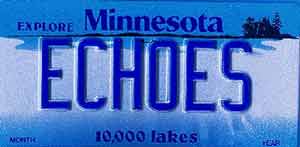
.echoes
.com
A division of ApSCo. Microware
 |
www
.echoes .com A division of ApSCo. Microware |
|
|
|
|
|
|
|
|
|
|
|
|
|
|
|
|
|
||||||||||||

IntroductionThought ya Might like to go to the show To feel the warm thrill of confusion That space cadet glow - Pink Floyd, "In The Flesh"
The American rock music festival was something that grew out of the increasingly popular style of music, while incorporating the features of existing music festivals. Although these features would change greatly in the next twenty years, the basic ideas were still the same. The Monterey Jazz Festival began in 1958 as a three day event with its proceeds going to musical and educational programs aimed at young people. This was not the first jazz festival, but it is important because out of it grew the Monterey Folk Festival. Joan Baez, Bob Dylan, and Peter Paul and Mary performed at the first Monterey Folk Festival, another three day event, on the weekend of 17 May 1963, along with many other folk artists. Four years later, the first International Monterey Pop Festival was the beginning of a new expression of rock music. The progression of the Monterey festivals is interesting because each one seems to have started right as the different musical forms were beginning to gain in popularity as well as social and critical acceptance. Even though jazz has existed since the turn of the century, it had become very popular in the fifties. Folk music was creeping into the mainstream music culture at the beginning of the sixties. Monterey Pop exemplified the important contributions rock music was making at the end of the sixties and beyond. Along with the growing interest of popular music during the sixties, was the growing population of teenagers and young adults. The music and its market were growing faster than anyone had expected. It seems only natural that this market would want to come together to enjoy each other and their music. Monterey Pop, and the festivals to follow, allowed for this. The problems with these gatherings were that promoters and the general public were not ready for it. The promoters had no idea how popular these events would be; Woodstock was so popular that the promoters could not control the number of people arriving to the festival, so it was eventually declared free. The general public, also known as the establishment, was not ready for the commotion that the youth, also known as the underground, would create. After Monterey Pop and Altamont, local governments passed legislation restricting the size of events held in their areas. As the underground matured and entered the world of the establishment, the role of the rock festival changed. No longer were the festivals considered to be a gathering for the sake of gathering, but rather as events to popularize social and political ideas. These events would be attempts to make the world a better place for everyone; a very sixties idea that unfortunately was not successful until the eighties. Attempts at sixties-type gatherings, like the US Festivals, were failures, but attempts at promoting the ideals of the sixties, like Live Aid and the Amnesty tours, were huge successes. Musically, the events been quite different, however, some performers seem to have been at all of the rock festivals of the last twenty years. Joan Baez performed at Monterey Folk and Pop and Woodstock in the sixties, and CERF, Live Aid, and the first Amnesty tour in the eighties. The Who performed at Monterey Pop and Woodstock as well as Live Aid. The presentations of these bands has been cyclic. At Monterey Pop, everyone had short sets to get their message across. By the time of Woodstock and Watkins Glen, bands were able to perform standard or even extended length sets. Set lengths were slowly decreased from that point back to the Monterey-type presentation of Live Aid and the Amnesty tours. The most important aspect of the rock music festivals is that it succeeded when rock was not the corporate giant that it has become, and continued to succeed, in different ways, through every stage of rock history. Each festival has succeeded for varying reasons. Each festival was a progression from the one before it. It would have been impossible to have Altamont without Woodstock, Woodstock without Monterey. Monterey Pop was successful because of Monterey Jazz and Folk, and also because it properly reached its market. The critical success of Monterey let rock music become more popular in the popular press, which in turn brought it closer to the establishment. Through the twenty years of the rock festival, rock has become part of the establishment which has allowed the festival to continue its success and influence.
|